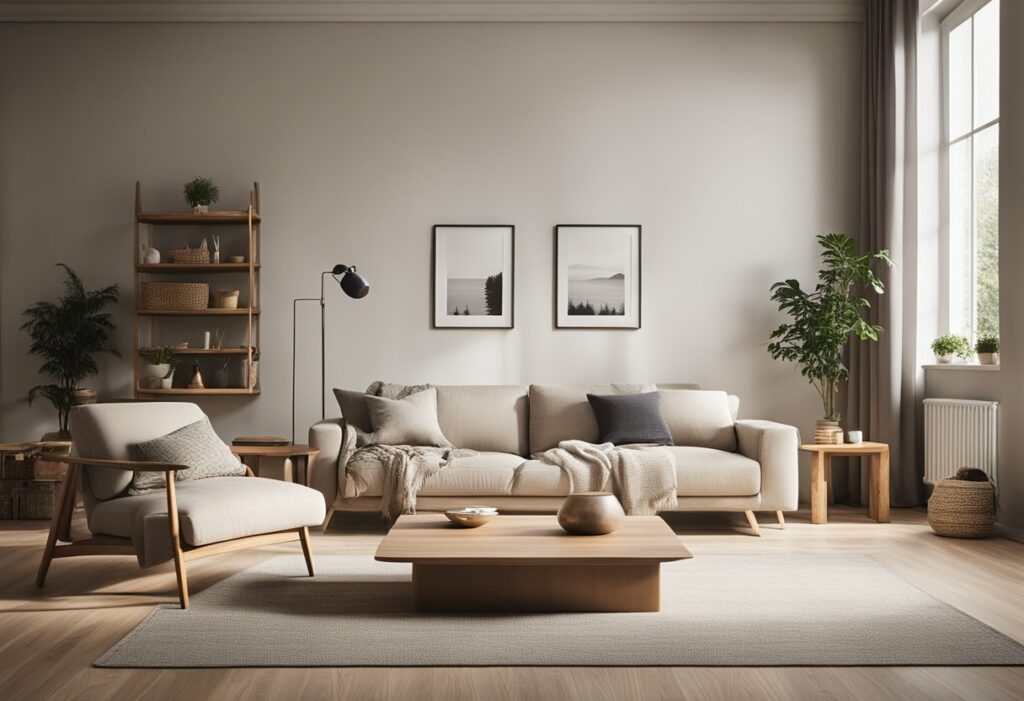Scandinavian Interior Design Principles: Embracing Simplicity and Functionality
Scandinavian interior design principles have become increasingly popular in recent years, and for good reason. This design style is characterised by its simplicity, functionality, and minimalism, with a focus on creating a cosy and inviting atmosphere. Whether you’re looking to redecorate your home or simply seeking inspiration, understanding the core principles of Scandinavian design can help you achieve a timeless and elegant look.
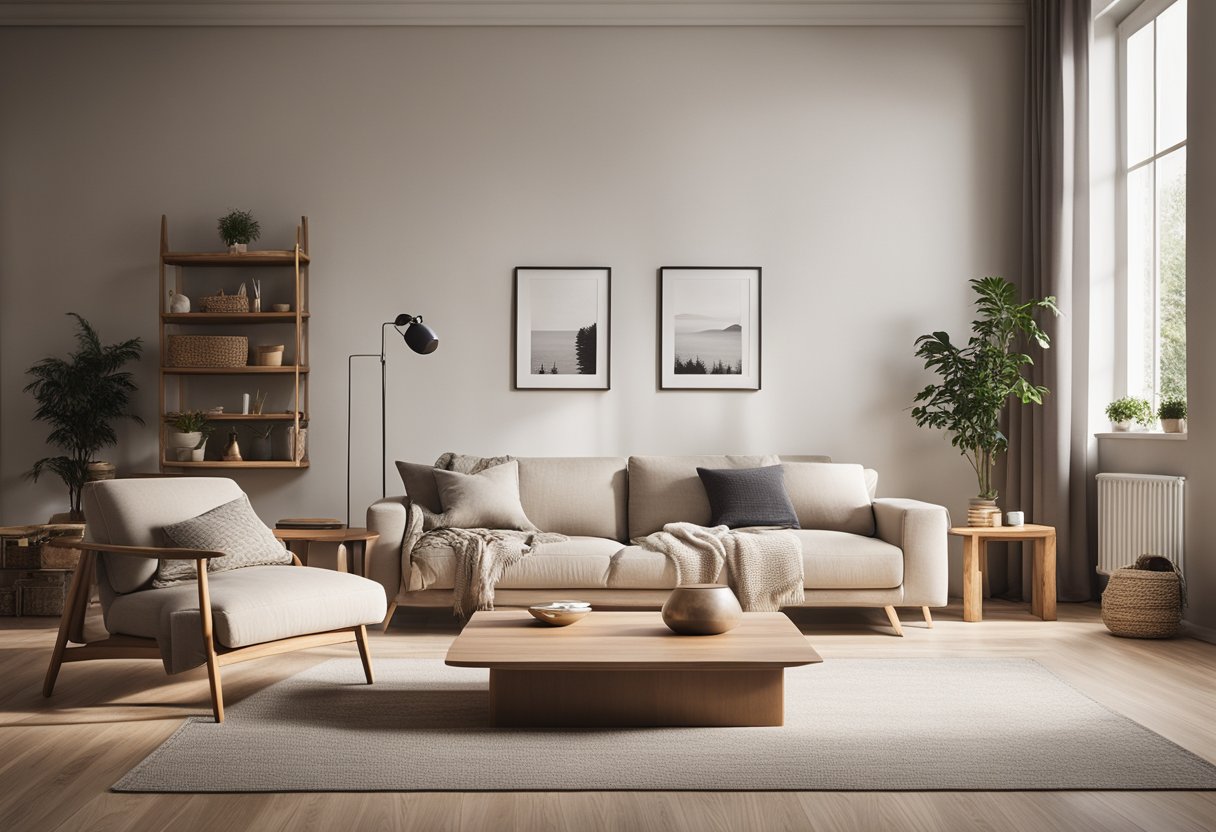
At the heart of Scandinavian interior design is the concept of hygge, which is all about creating a warm and inviting atmosphere that promotes relaxation and comfort. This is achieved through the use of natural materials, such as wood and wool, as well as soft lighting and muted colours. The result is a space that feels cosy and welcoming, and that encourages you to slow down and enjoy the moment.
To achieve the Scandinavian look, there are several key principles that you should keep in mind. These include using a neutral colour palette, incorporating natural textures, and prioritising functionality over aesthetics. By following these principles, you can create a space that is both beautiful and practical, and that reflects your personal style and taste.
Key Takeaways
- Scandinavian interior design is characterised by simplicity, functionality, and minimalism, with a focus on creating a cosy and inviting atmosphere.
- The use of natural materials, soft lighting, and muted colours is key to achieving the hygge look.
- To achieve the Scandinavian look, focus on using a neutral colour palette, incorporating natural textures, and prioritising functionality over aesthetics.
Core Principles of Scandinavian Design
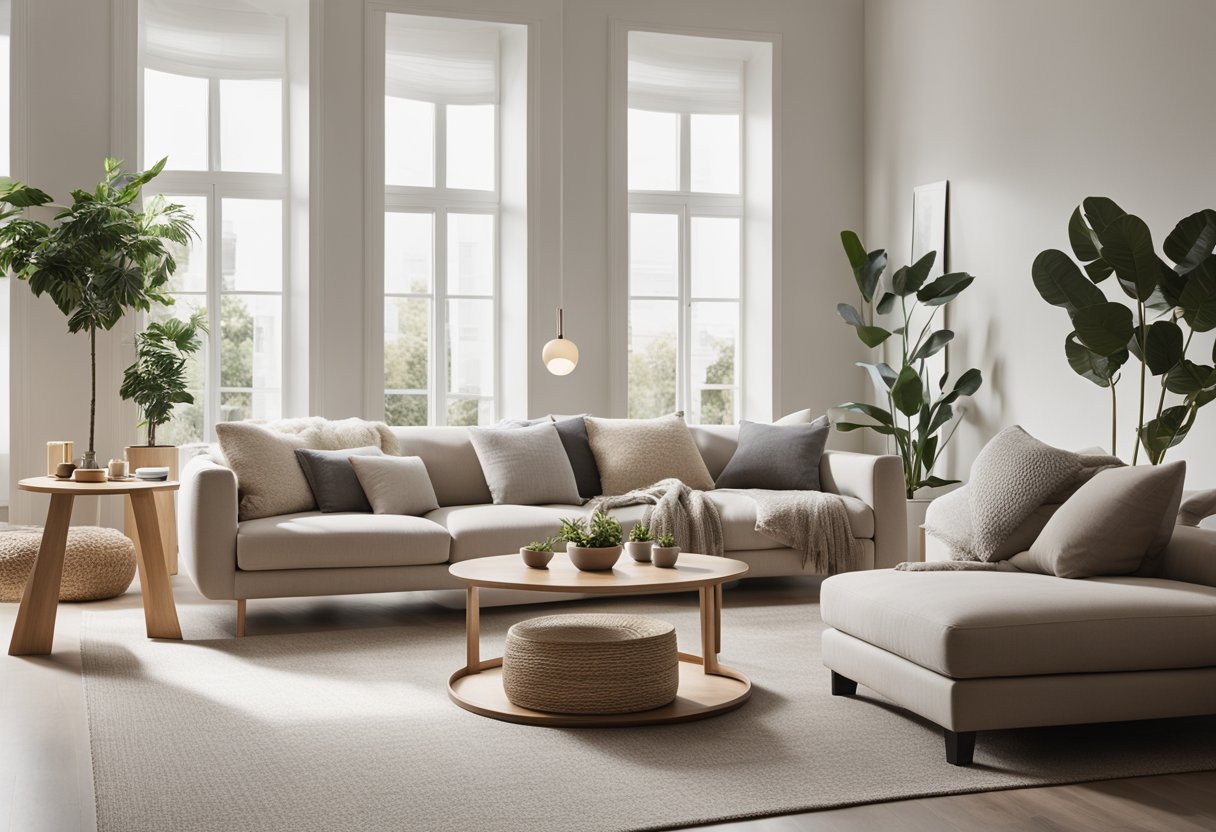
If you’re looking to create a space that is both functional and aesthetically pleasing, then Scandinavian design is the perfect choice for you. This design style is characterized by its minimalist aesthetics, focus on functionality, and incorporation of natural elements. Here are some of the core principles of Scandinavian design that you can incorporate into your own space:
Embracing Minimalist Aesthetics
One of the key principles of Scandinavian design is minimalism. This means that your space should be decluttered and free of unnecessary items. By keeping only the essentials, you can create a space that is both functional and visually appealing. To achieve this, focus on clean lines, simplicity, and a neutral color palette.
Incorporation of Natural Elements
Scandinavian design is heavily influenced by nature, and this is reflected in the use of natural materials such as wood, wool, and linen. By incorporating these natural elements into your space, you can create a warm and inviting atmosphere. Additionally, natural light and greenery can help to bring the outdoors inside and create a sense of calm.
Focus on Comfort and Cosiness
Scandinavian design is all about creating a comfortable and cosy space. This can be achieved through the use of soft textiles such as blankets and cushions, as well as the incorporation of hygge – a Danish concept that focuses on creating a feeling of warmth and contentment. By prioritizing comfort and cosiness, you can create a space that is both functional and inviting.
In summary, Scandinavian design is characterized by its focus on functionality, minimalism, and incorporation of natural elements. By embracing these core principles, you can create a space that is both aesthetically pleasing and functional.
Design Elements and Materials
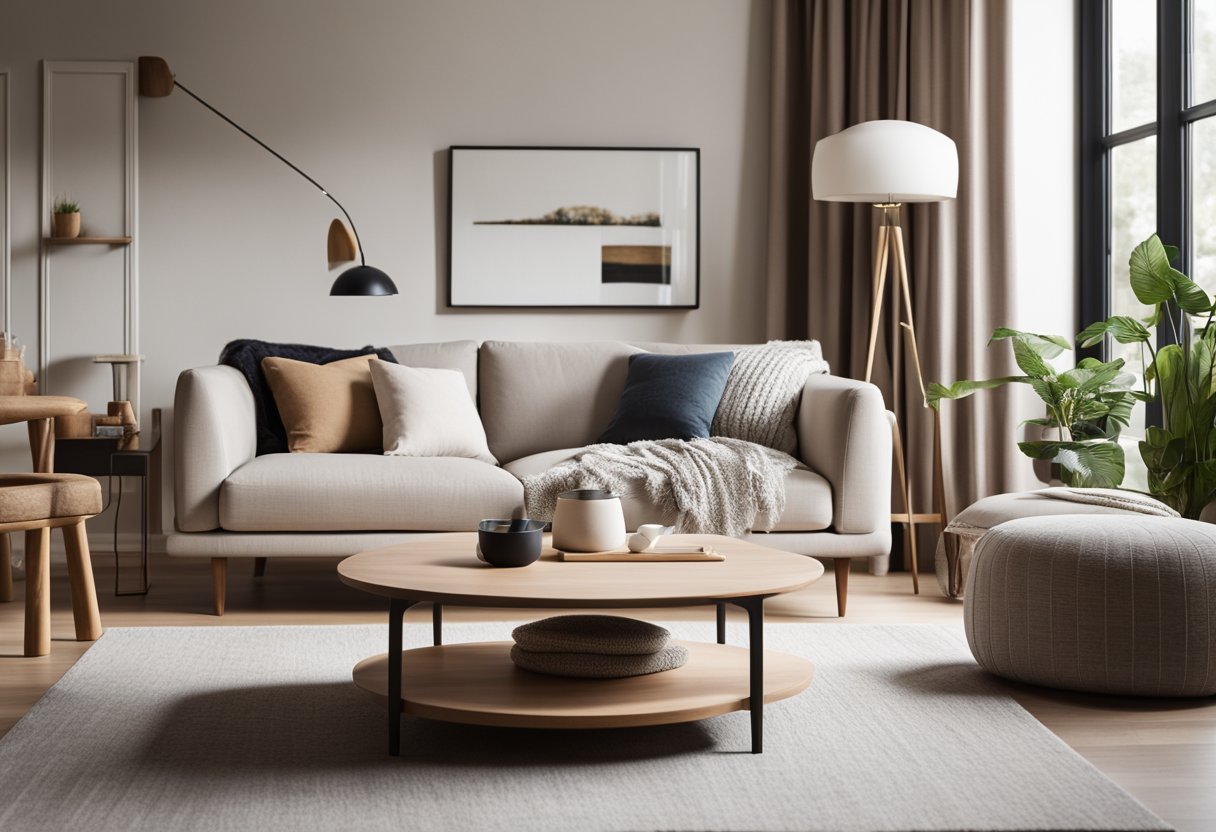
Scandinavian interior design is characterised by its minimalism, functionality, and use of natural materials. The style is focused on creating a comfortable and inviting space that is both practical and visually appealing. Here are some of the key design elements and materials that are commonly used in Scandinavian interior design.
Colour and Texture
Neutral colours are a staple of Scandinavian decor, with white, beige, and gray being the most popular choices. These colours are often used in combination with natural wood tones to create a warm and inviting atmosphere. Texture is also an important element of Scandinavian design, with materials such as wool, linen, and leather being used to add depth and interest to a space.
Furniture and Accessories
Scandinavian furniture is known for its modern, minimalist design, with clean lines and simple shapes being the norm. Pieces such as the Wishbone Chair and Egg Chair are iconic examples of Scandinavian design, with their sleek and timeless aesthetic. Artwork and lighting are also important accessories in Scandinavian design, with pieces that are both functional and visually appealing being favoured.
Sustainable and Practical Choices
Sustainability and practicality are key considerations in Scandinavian interior design. High-quality materials such as wood, leather, and wool are used to create durable and long-lasting pieces that are both eco-friendly and practical. The focus is on creating a space that is both beautiful and functional, with pieces that are designed to stand the test of time.
In summary, Scandinavian interior design is characterised by its use of natural materials, neutral colours, and minimalist design. Furniture and accessories are chosen for their functionality and visual appeal, with sustainability and practicality being key considerations. Whether you are looking to create a cosy and inviting living room or a sleek and modern office space, Scandinavian design principles can help you achieve your desired look and feel.
Frequently Asked Questions
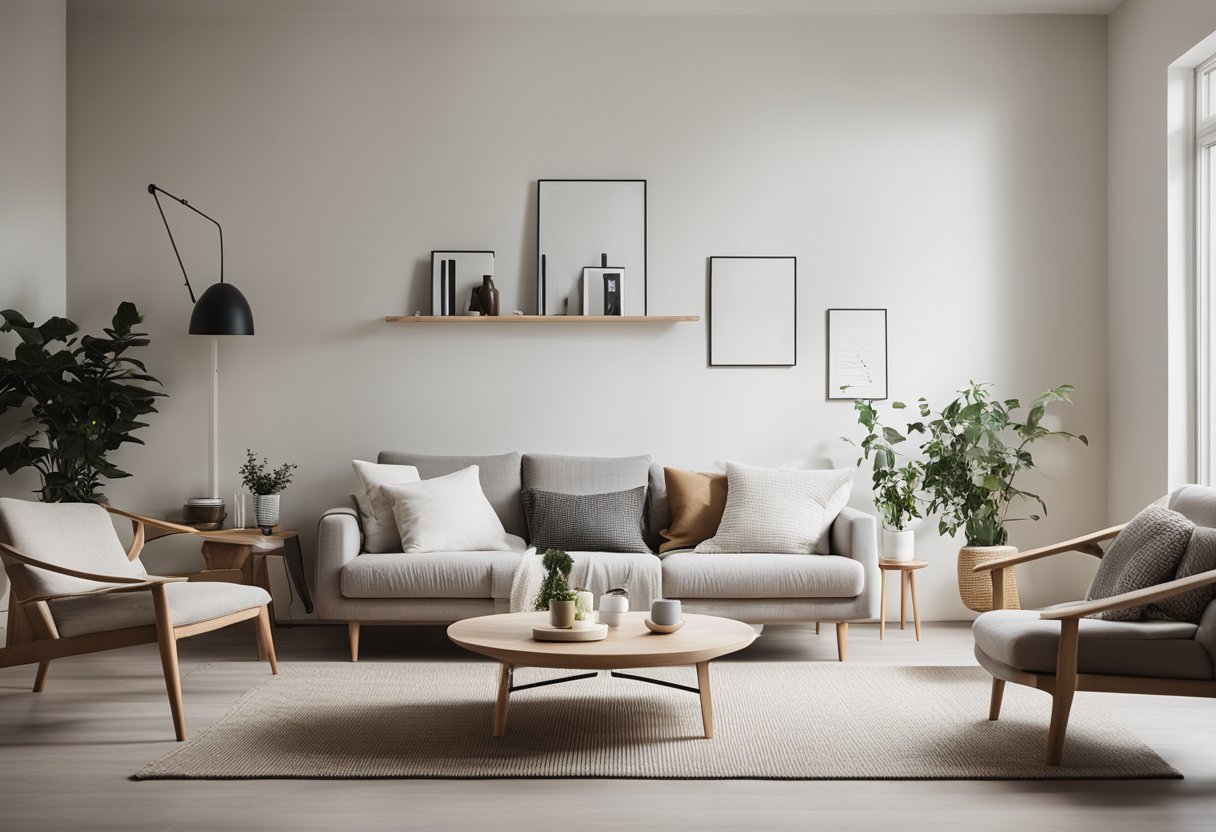
What are the key elements that define Scandinavian style interiors?
Scandinavian interior design is characterized by simplicity, minimalism, functionality, and an emphasis on natural materials. The key elements that define this style include clean lines, neutral colours, and a focus on creating a warm and inviting atmosphere. Scandinavian interiors often feature natural wood, such as light-coloured oak or pine, and incorporate textiles such as wool and linen.
How does colour influence Scandinavian interior aesthetics?
Colour plays an important role in Scandinavian interior design, with a focus on light and neutral tones such as white, beige, and grey. These colours help to create a sense of calm and tranquillity, while also allowing natural light to bounce around the room. However, pops of colour can be introduced through textiles, such as cushions or rugs, or through artwork or decorative accessories.
In what ways do functionality and simplicity converge in Scandinavian home design?
Scandinavian design is known for its focus on functionality and simplicity. This means that every element in the home should serve a purpose, while also being aesthetically pleasing. For example, furniture should be designed to be comfortable and practical, while also being visually appealing. This focus on functionality and simplicity helps to create a clutter-free and calming environment.
What distinguishes Scandinavian design from Nordic design?
While Nordic design encompasses the design aesthetic of the Nordic countries (Denmark, Finland, Iceland, Norway, and Sweden), Scandinavian design specifically refers to the design aesthetic of Denmark, Norway, and Sweden. Scandinavian design is characterized by its minimalism, simplicity, and functionality, while Nordic design is more diverse and encompasses a wider range of styles.
Can you explain the role of natural light in Scandinavian decor?
Natural light plays a crucial role in Scandinavian decor, as it helps to create a bright and airy atmosphere. Scandinavian interiors often feature large windows and light-coloured walls, which allow natural light to flood the space. This focus on natural light helps to create a sense of warmth and comfort, while also promoting a connection to nature.
What patterns are most iconic in Scandinavian design motifs?
Scandinavian design is known for its use of simple geometric patterns, such as stripes, dots, and grids. These patterns are often used in textiles, such as cushions, blankets, and curtains, and help to add visual interest to a space without overwhelming it. Other iconic patterns in Scandinavian design include floral motifs and nature-inspired designs, such as leaves or trees.

